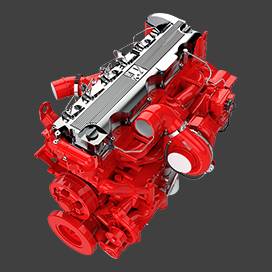Nov . 06, 2024 05:25 Back to list
Effects of Excessive Heat on Brake Drums in Commercial Vehicles and Safety Implications
The Impact of Overheating Brake Drums on Vehicle Performance
Brake drums play a crucial role in the braking system of many vehicles, especially those with a heavy load. They are designed to dissipate heat generated during braking, which is essential for maintaining effective braking performance. However, when brake drums become excessively hot, several issues can arise, affecting both vehicle safety and performance.
Understanding Brake Drums
Brake drums are cylindrical components that house brake shoes. When the driver applies the brakes, brake shoes are forced against the inner surface of the drum, creating friction that slows down the vehicle. This process generates heat. Under normal operating conditions, brake drums can handle significant temperatures. However, persistent overheating can lead to severe problems.
Causes of Overheating
Overheating can occur for various reasons, including 1. Excessive Braking Frequent or aggressive braking—common during long downhill descents—can cause brake drums to heat up significantly. 2. Worn Brake Components Worn-out brake pads or shoes can result in a larger surface area coming into contact with the drum, increasing friction and, consequently, heat. 3. Improper Adjustments If the brakes are not correctly adjusted, the brake shoes may not be positioned correctly, leading to constant rubbing against the drum. 4. Poor Quality Materials Inferior parts can lead to poor heat dissipation and increased friction.
Consequences of Overheated Brake Drums
When brake drums reach excessive temperatures, several detrimental effects can occur
1. Brake Fade This is one of the most significant issues associated with overheated brake drums. As the drum heats up, the effectiveness of the brake pads decreases, leading to longer stopping distances. This condition, known as brake fade, can be particularly dangerous in emergencies. 2. Warping Prolonged exposure to high temperatures can cause the brake drums to warp. This deformation can result in uneven contact with brake shoes, causing vibrations and further decreasing braking efficiency. When a driver presses the brake pedal, a warped drum can lead to a pulsating feel, which makes it difficult to control the vehicle.
3. Cracking and Fracturing Extreme heat can also lead to cracks developing in the brake drums. A cracked drum can compromise the integrity of the braking system and might even lead to complete brake failure if not addressed promptly.
what happens when your brake drums get very hot cdl

4. Increased Wear and Tear Operating with overheated brakes accelerates the wear on all related components, including brake shoes and cylinders. This not only leads to more frequent replacements but can also increase maintenance costs significantly.
5. Heat Dissipation Issues Once brake drums are overheated, they may struggle to dissipate heat effectively. This creates a cycle where the drums remain hot, further exacerbating the problems mentioned above.
Preventive Measures
To avoid the adverse effects of overheating brake drums, vehicle operators should consider the following preventive measures
1. Regular Maintenance Routine inspections of the braking system are essential. Checking for wear and tear on brake components and ensuring they are adjusted properly can help.
2. Quality Replacement Parts Using high-quality brake parts can significantly improve heat dissipation and overall braking performance.
3. Driving Habits Drivers should be mindful of their braking habits, especially in hilly or mountainous areas. Utilizing engine braking can help reduce reliance on the brakes.
4. Heat Management Solutions For heavy-duty vehicles, implementing brake cooling solutions or upgrading to ventilated brake drums can also mitigate overheating risks.
Conclusion
Overheating brake drums can have serious implications for vehicle performance and safety. Understanding the causes, consequences, and preventive measures is essential for maintaining optimal braking efficiency. By taking appropriate steps, drivers can ensure their braking systems function effectively, minimizing risks on the road.
-
Your Brake Drum Man: Quality & Performance Parts
NewsAug.21,2025
-
Explore Japan: Ultimate Travel Guide & Authentic Experiences
NewsAug.19,2025
-
Your Brake Drum Man: Premium & Reliable Brake Drums for Sale
NewsAug.18,2025
-
ROR Web Development: Build Fast, Scalable, Secure Apps
NewsAug.17,2025
-
Scania Brake Drums: OEM Quality for Optimal Safety & Durability
NewsAug.16,2025
-
R.V.I: Advanced Remote Visual Inspection for Precision
NewsAug.15,2025
